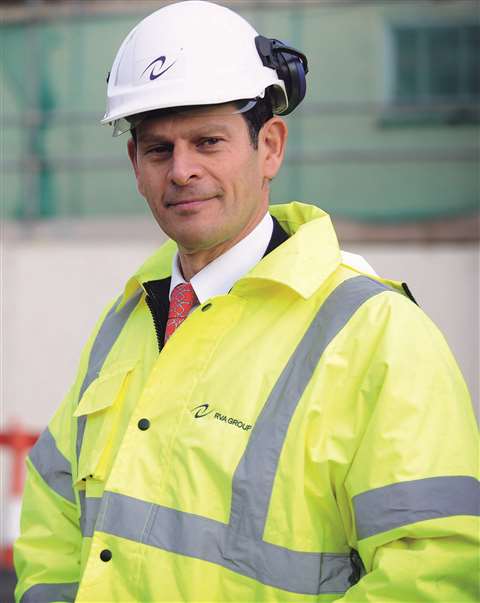Decommissioning – supply and demand
07 January 2020

A couple of years ago, I spoke at KHL’s World Demolition Summit in London about supply and demand in our industry.
I truly believed that while the profession had admittedly ridden through a very turbulent time in the years previous – not least due to the unpredictability of British economics – we as an industry had an opportunity on our hands.
The volume of projects coming to the fore looked set to outstrip the number of suitable contractors – even on a global scale.
This was particularly apparent in the power sector, with traditional coal-fired assets reaching their end of life worldwide and being taken offline.
Fast forward to late 2019 and the scales have certainly tipped in this manner. There are now more power stations facing decommissioning, decontamination, dismantling and demolition than there are people to do the work.
Appropriate experience
Clients are consequently finding it hard to appoint contractors with the appropriate level of experience, even for mothballing assignments, never mind end-to-end decommissioning programmes. This is having an impact on plans, timescales, financial parameters and the environment on a massive scale.
Though it may sound like it, this is not about saying “I told you so”.
But the unbalanced scales of supply and demand do need to be acknowledged so that work can continue safely, and challenges can be turned into opportunities for the stakeholders involved.
From the client’s perspective, it is crucial to comprehend exactly what technical engineering expertise is required to carry out the project.
Few power organisations will have this information to hand – decommissioning is not the reverse of commissioning, so this type of programme is likely to represent a step into the unknown.
However, with the right guidance the client will find it possible to prepare a thorough tender specification before they begin their hunt to build a competent project team.
That team doesn’t necessarily require a contractor with power station experience (everyone has to do a “first”) providing the contractor has demonstrable and relevant expertise that will add value to the project – the client cannot, under any circumstances, afford to cut corners after all, simply because the supply chain is stretched.
From the contractor’s perspective, now is the time to look at what experience the team does hold. Where have complex assignments been successfully completed?
What skill sets are apparent or even lacking among personnel? Has the team worked in other heavy industrial and high hazard sectors, and – given the propensity of work arising overseas – has the contractor previously had to operate and manage at distance, or navigate cultural differences to ensure a successful project outcome?
Role of the consultant
The role of a decommissioning consultant should also be welcomed by contractors, not feared. They’re not employed to police a project, but to bring value and innovation to the table, keep it safe, financially sound and environmentally robust.
In the context of this debate, a consultant with power station experience could give the client more confidence to appoint a contractor who satisfies the overarching tender criteria but hasn’t previously completed a power sector assignment.
In this era of collaboration, this three-party client-consultant-contractor relationship can create a centre of excellence which may represent a different way of working, but can deliver a robust project outcome, especially with the supply and demand scales as imbalanced as they are. So here are the three steps towards a best-practice power station decommissioning project.
First, you need to establish a common mindset.
Many energy operators fail to dedicate the level of time, skills and resources truly required to execute a decommissioning programme, particularly in the power sector.
Consultants and contractors must be honest and realistic about proposed plans and make the best use of that often undervalued resource – time.
It should also be appreciated from the outset that the project may attract a great degree of third-party stakeholder, local community and media interest.
Dialogue with these parties needs to be accommodated too.
Site diversity
Secondly, focus on bringing assets to a “known state”.
Rarely are two structures the same in any industrial sector, and energy generation is no exception.
Power stations throughout the country have been built at varying times, with different configurations and using multiple construction techniques.
Some boilers are suspended, for instance, while others have been erected from the ground up.
This site diversity is challenging, but in the absence of detailed plans, the challenges escalate significantly.
It’s in the DNA of a demolition professional to problem solve, but the process of gathering information about the presence, location and type of hazardous insulation materials – to bring assets to their known state – is far from straightforward.
This is particularly difficult if drawings are non-existent, some structures have only been partially cleaned and the knowledge of important site personnel has been lost.
Again – aside from appointing a competent team – the key advice here is to allow sufficient time and other resources at the outset of a project.
This will allow you to assess the level of residual product, any loss of containment and what the structural integrity is of the assets that remain.
Finally, mothballed or partially closed sites will inevitably have power distribution grid infrastructures on site, which must often remain live, in-situ and undisturbed.
The location of these sites is likely to determine what else has to stay and which decommissioning methodologies can be used.
It will also determine the sequential roll out of works throughout the project.
The rerouting of utilities is sometimes essential, which is an achievable yet complex and arduous task.
Once again, the time required to successfully execute this diversion exercise should not be underestimated.
- · Article first published in the November-December 2019 issue of Demolition & Recycling International




